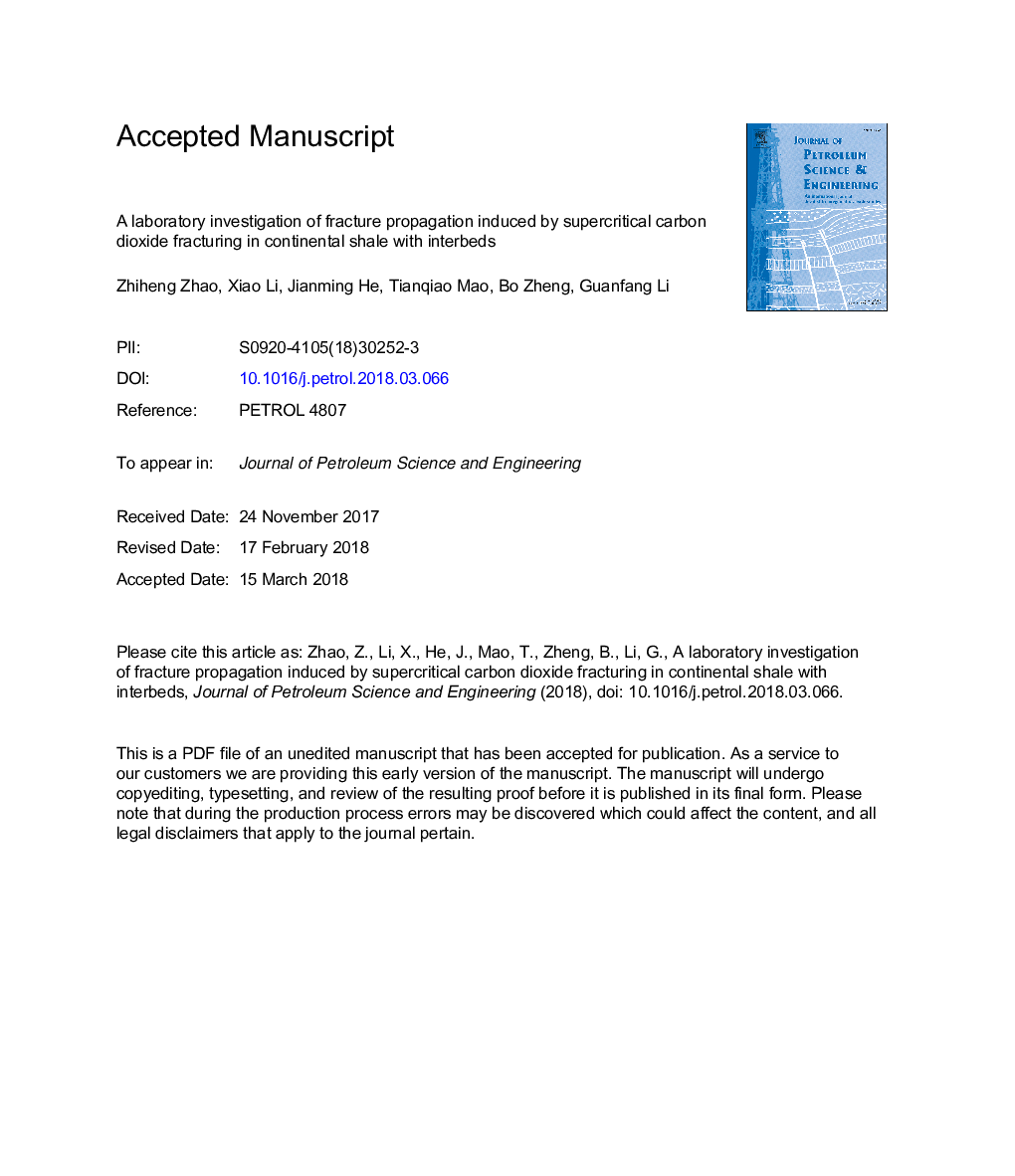| Article ID | Journal | Published Year | Pages | File Type |
|---|---|---|---|---|
| 8124982 | Journal of Petroleum Science and Engineering | 2018 | 24 Pages |
Abstract
Supercritical carbon dioxide (SC-CO2) used as a fracturing fluid in the shale fracturing stimulation is a promising technology as it can save much water and have some particular properties, such as low surface tension, large diffusion coefficient, strong permeable ability and adsorption capacity in shale. In previous studies, SC-CO2 fracturing presents great advantages in marine shale, granite and tuff. In this work, continental shale with interbeds from the Ordos Basin, China was used to conduct SC-CO2 fracturing experiments under the different stress conditions. Based on the observation of visible fractures before and after experiments, the fractures on the surface mainly propagate along natural fractures, bedding planes and interbeds, where crossing beddings and interbeds can also be observed. Besides, according to visualization and quantification of the main fractures and the main fracture surfaces by electronic microscope and three-dimensional scanner, with the increase in the stress difference, the main fracture can easily cross shale beddings and interbeds, and partial vertical fractures are formed, so tortuosity of the main fracture and roughness of the main fracture surface tend to increase. Furthermore, four main types of interactions between the main fracture and the fracture branch are obtained and the number of the fracture branches induced by the SC-CO2 fracturing is generally larger than that induced by the water fracturing. Meanwhile, compared with the water fracturing, it is implied that the breakdown pressure of SC-CO2 is generally lower, and its tortuosity of the main fracture and roughness of the main fracture surface tend to be higher under the same experimental conditions. Therefore, more curved and wavelike fractures with more branches can be generated in the continental shale SC-CO2 fracturing.
Related Topics
Physical Sciences and Engineering
Earth and Planetary Sciences
Economic Geology
Authors
Zhiheng Zhao, Xiao Li, Jianming He, Tianqiao Mao, Bo Zheng, Guanfang Li,
